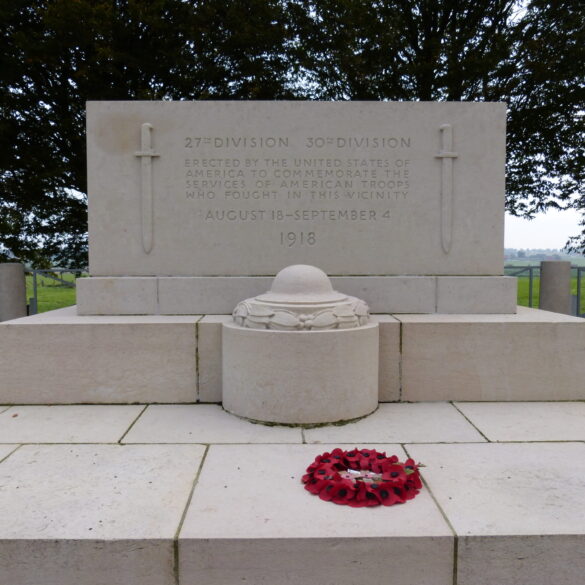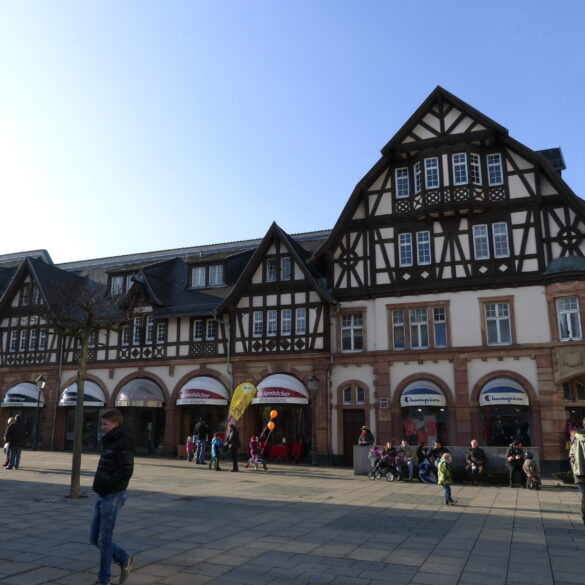After we left Ypres, we headed to the city of Antwerp in Belgium for 2 nights.
Although the city is mainly known for its diamond trade, there is a lot more to it than that.
Antwerp is a vastly underrated city that you should definitely visit on a trip to Belgium.
In the early 16th century, it was Europe’s wealthiest city thanks to its busy port. People from all over the world passed through, lived in and traded in Antwerp and it was a very cosmopolitan city. Sadly, Antwerp began a long decline that started with the Reformation, followed by war and plundering in the late 1500s. The river was also closed to navigation for almost 200 years as a result of a treaty. Later, Antwerp was occupied and severely damaged during both world wars. It’s only in the last 20 years or so that Antwerp has started to bounce back and is now actually a center of fashion.
I thought the city had a very young, hip and energetic vibe and I see it going places once everyone starts looking for the next Berlin.
We arrived in Antwerp late on a Tuesday afternoon and immediately headed to the Plantin-Moretus-House-Workshops-Museum, a UNESCO site that I wrote about here. (LINK)
We also checked out a couple of other sites that are covered in that post.
We then went back to our fabulous hotel.
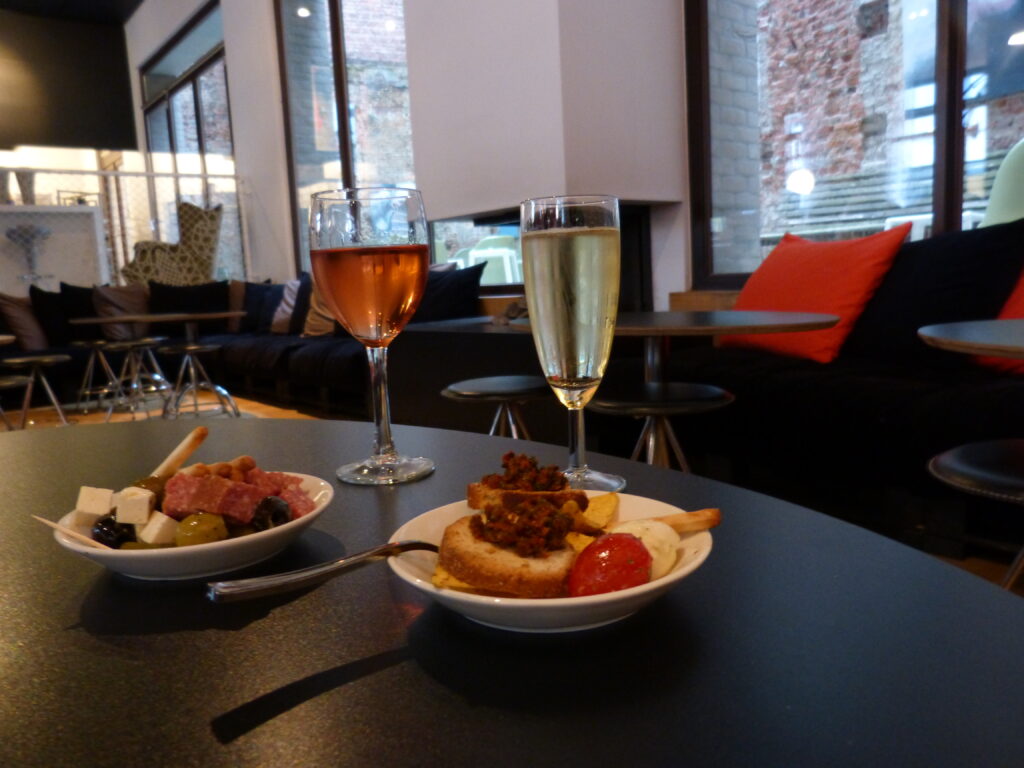
It had a free happy hour every day with yummy snacks and your choice of wine, beer, prosecco, soft drinks and coffee. Happy hour is really a misnomer as it was available from 4 p.m. to 8 p.m. You could eat and drink to your heart’s content for 4 hours, so not a bad deal.
The next day, our first full day in town, we hopped the metro to the central train station.
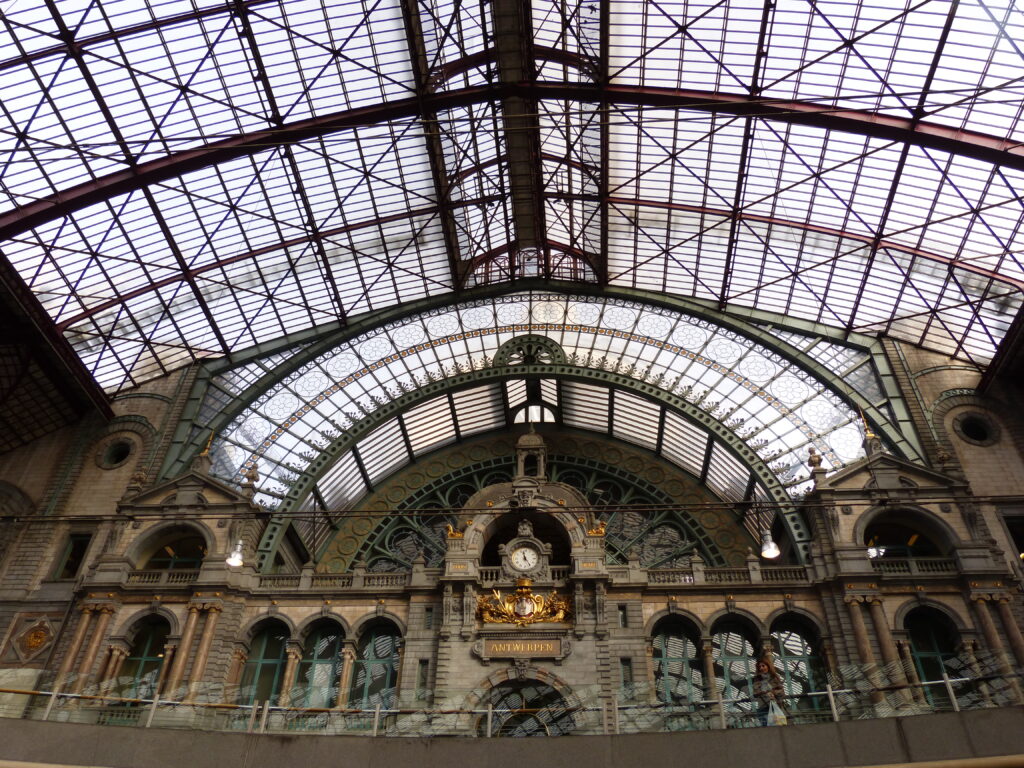
The train station is truly a work of art that was built between 1895 and 1905. It was recently renovated and last year a British magazine actually voted it the most beautiful train station in the world.
I had been to the station once before but was unable to appreciate its beauty at the time. It was in the middle of February a few years ago and I was just there to switch trains. It was so, so, so unbelievably cold both outside and inside the building that all I could do was sit and shiver while waiting for my connection. I’m happy that I was able to go back and appreciate it under nicer conditions.
The Diamond Quarter is just outside the train station. Both the station and the surrounding area are filled with jewelry stores. I had fun window shopping but managed to keep a close hold on the credit cards and not give in to temptation.
Leaving the station, we walked along a huge shopping street called De Keyserlei.
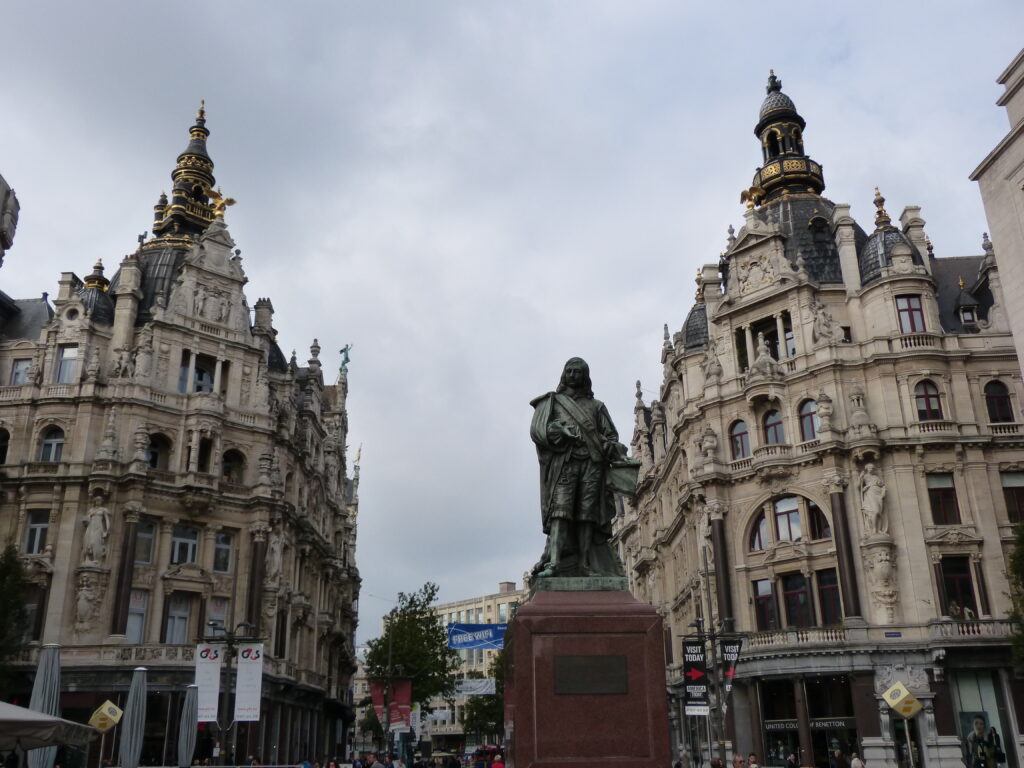
Those buildings, which reminded me a lot of the buildings we saw in Madrid (LINK), date from the late 1800s.
Walking past them we ended up in the pedestrian zone that houses a shopping area called the Meir.
There we ducked into an indoor mall called the Stadsfeestzaal.
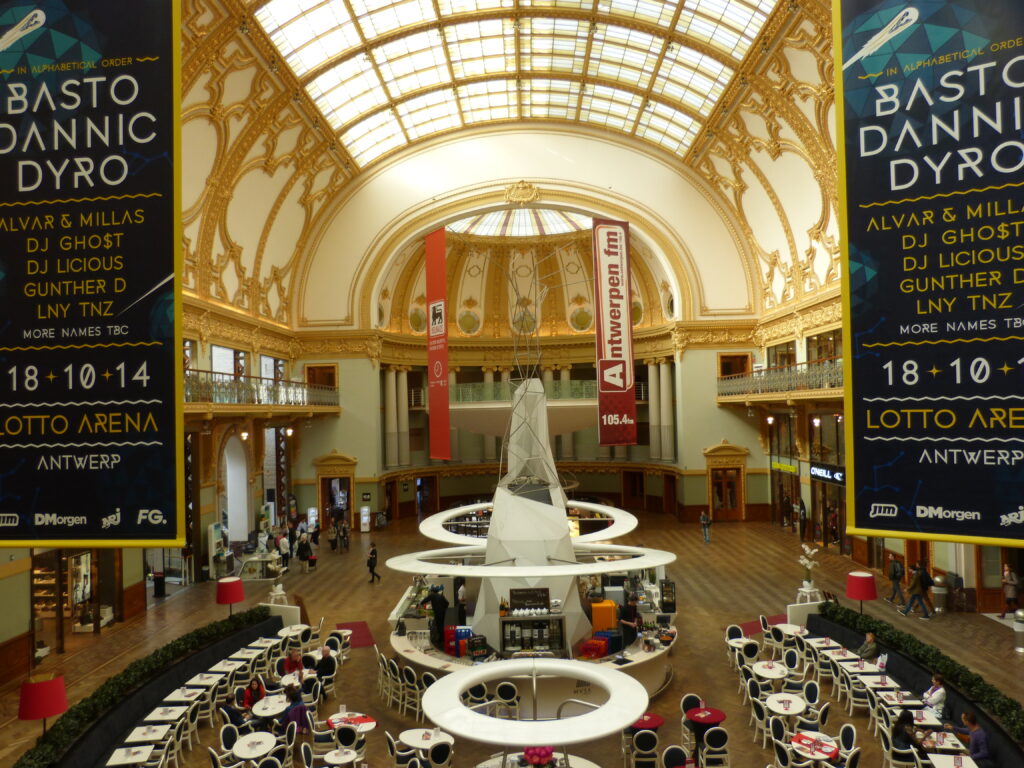
It’s very elaborately decorated but it feels light and airy inside. You can there is a nice café there in the middle of the ground floor.
One of the many things that amuse me while traveling around Europe is the different vending machines you run across.
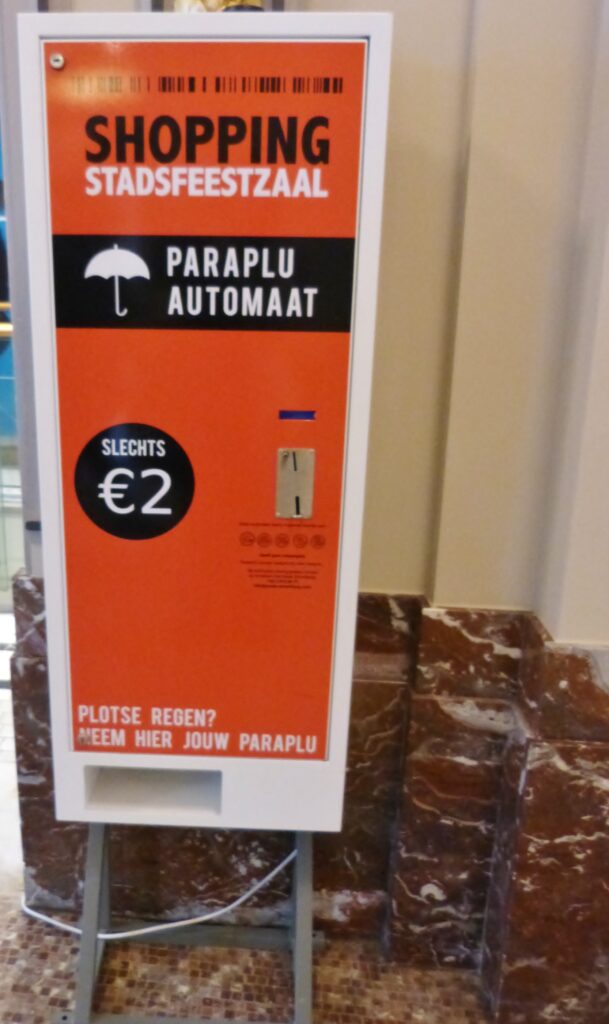
That machine, selling umbrellas for just 2 Euro each, was in the entryway of the Stadsfeestzaal. What an ingenious idea.
The artist Peter Paul Rubens spent much of his life in Antwerp and his house there is now a museum.
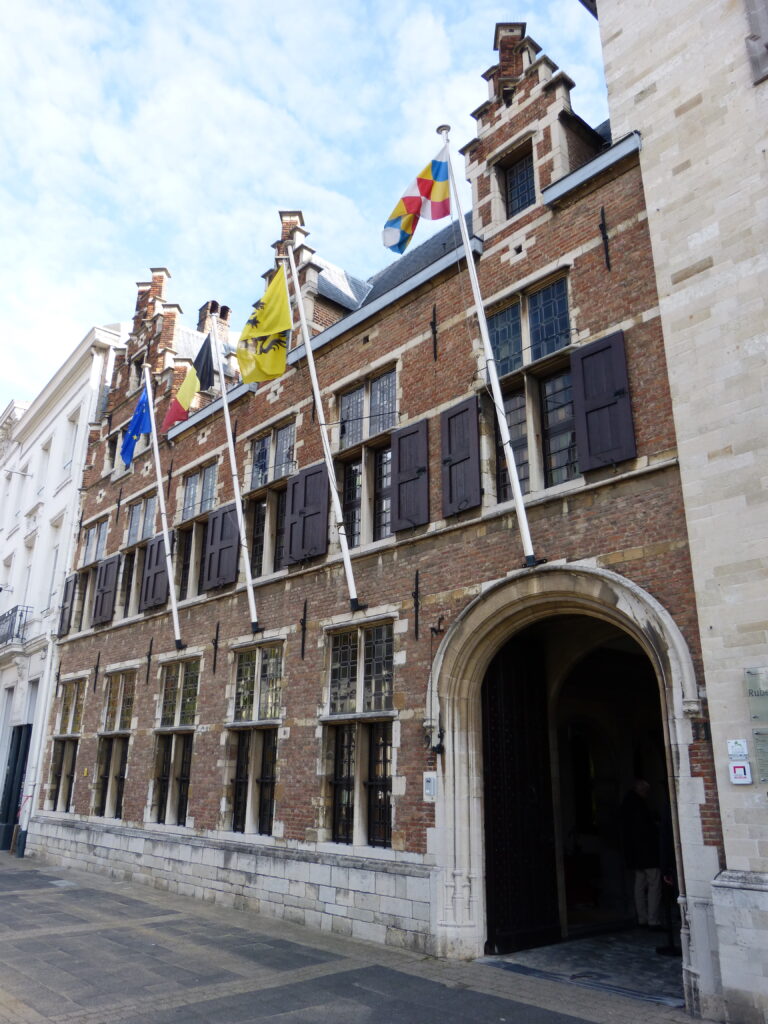
Visiting it wasn’t on our agenda for this trip although we have seen numerous Rubens paintings in other museums including the Prado in Madrid, the Uffizi Gallery in Florence (LINK) and Schloss Wilhelmshöhe in Kassel, Germany. (LINK)
Rubens wasn’t the only famous resident of Antwerp.
Napoleon slept here.
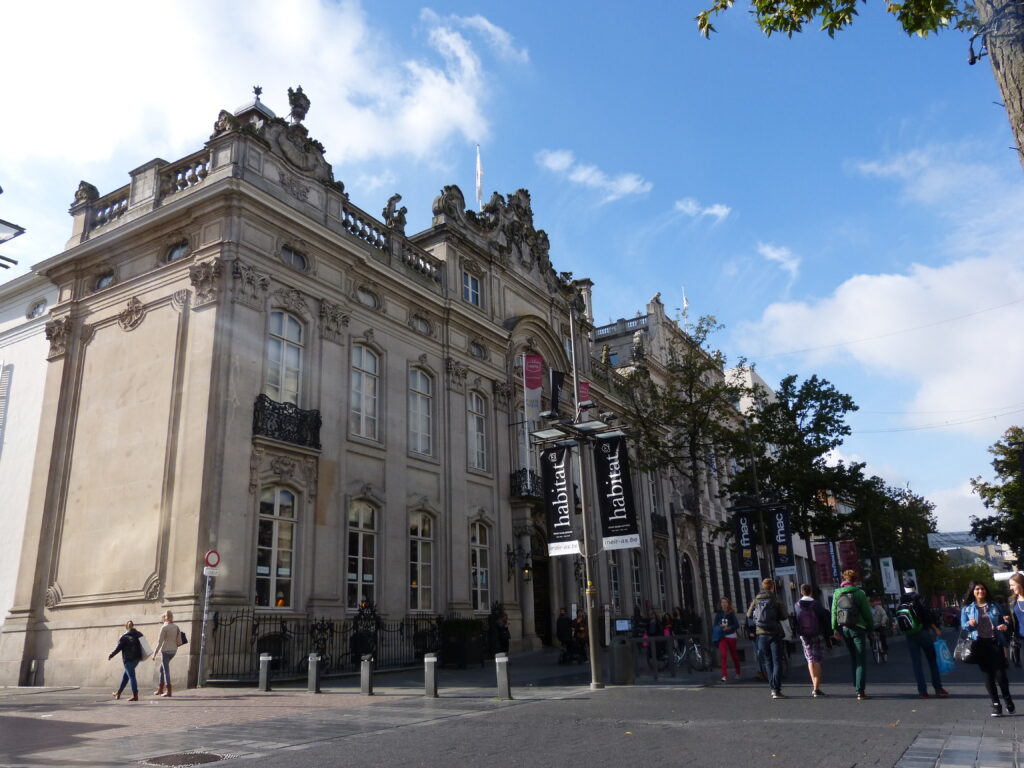
That building is a palace called Paleis op de Meir, built in 1745. Napoleon later purchased it and even later still the Belgian King Leopold II lived there.
It now belongs to the government and you can pay to take a tour of the rooms on the upper level. On the lower level, there is a chocolate shop inside and they pay homage to the building’s history.
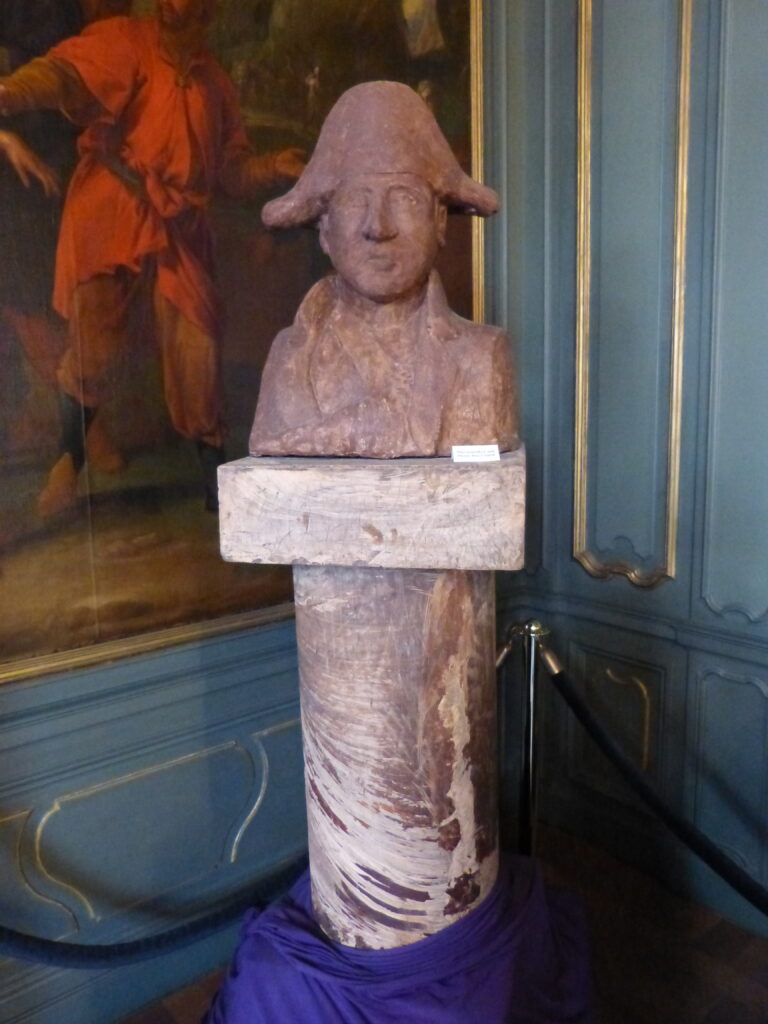
Yup, that’s a big ol’ chocolate Napoleon!
Rubens is also buried in Antwerp, at the St. James’ Church, so we headed over there next to see his tomb. Unfortunately the church was closed when got were there so we didn’t get to see anything. I’m not sure if the church was being renovated, but it was all fenced off and shut up tight.
Near the church is a building called the Boerentoren or Farmers Tower. It was Europe’s first skyscraper and also its tallest building until the 1950s. It is still the second tallest structure in Antwerp.
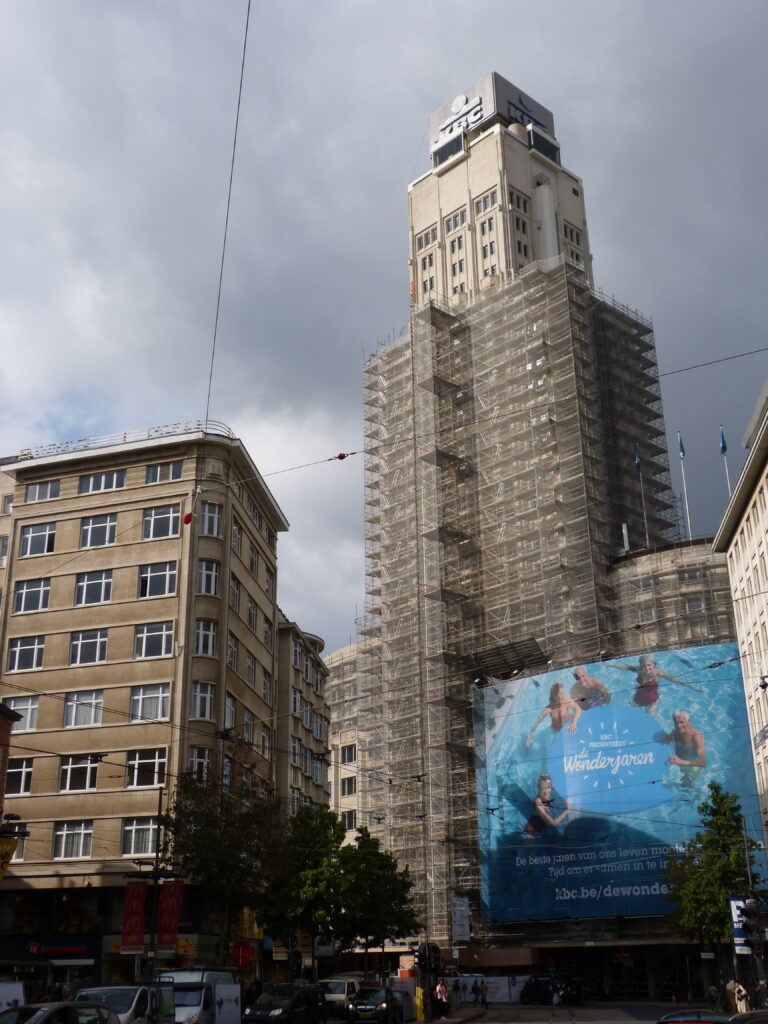
Again unfortunately, this building was covered in scaffolding so we didn’t get to see anything there either.
Next we walked over to the Cathedral of Our Lady which was thankfully not under construction.
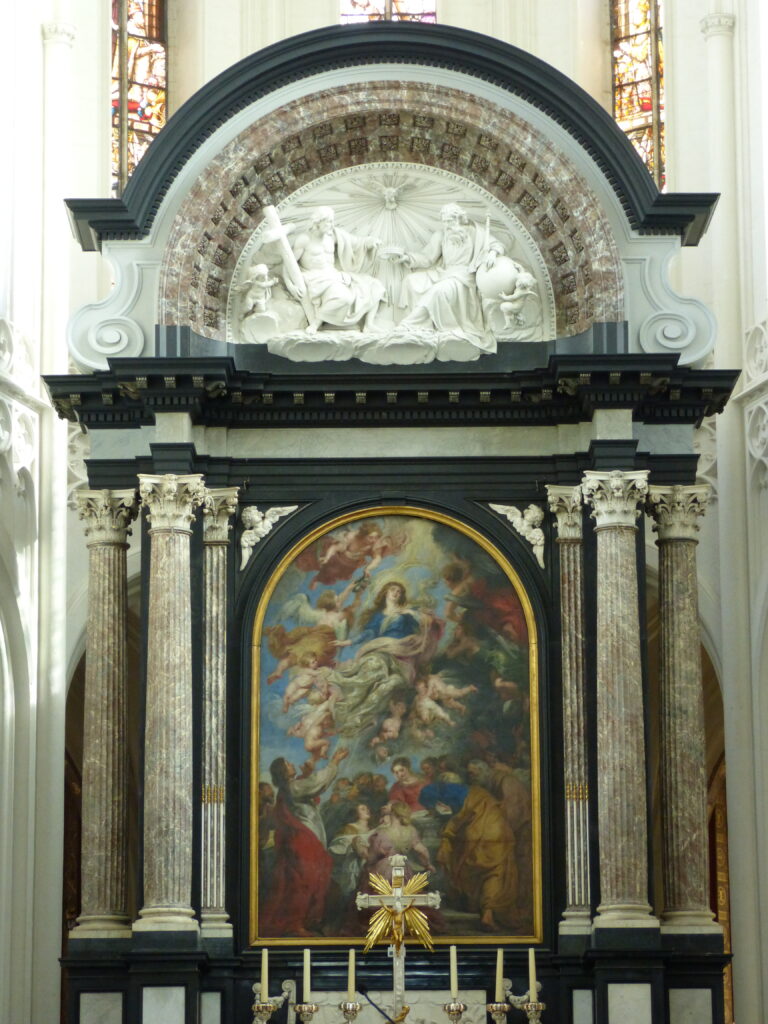
The altarpeice painting that you see there between the columns is a work by Rubens called Assumption of the Virgin Mary. It is one of four Rubens paintings in the cathedral.
Construction on this splendid church was started in 1352 and to this day has never technically been completed.
Near the cathedral is the Grote Markt, the main square in Antwerp.
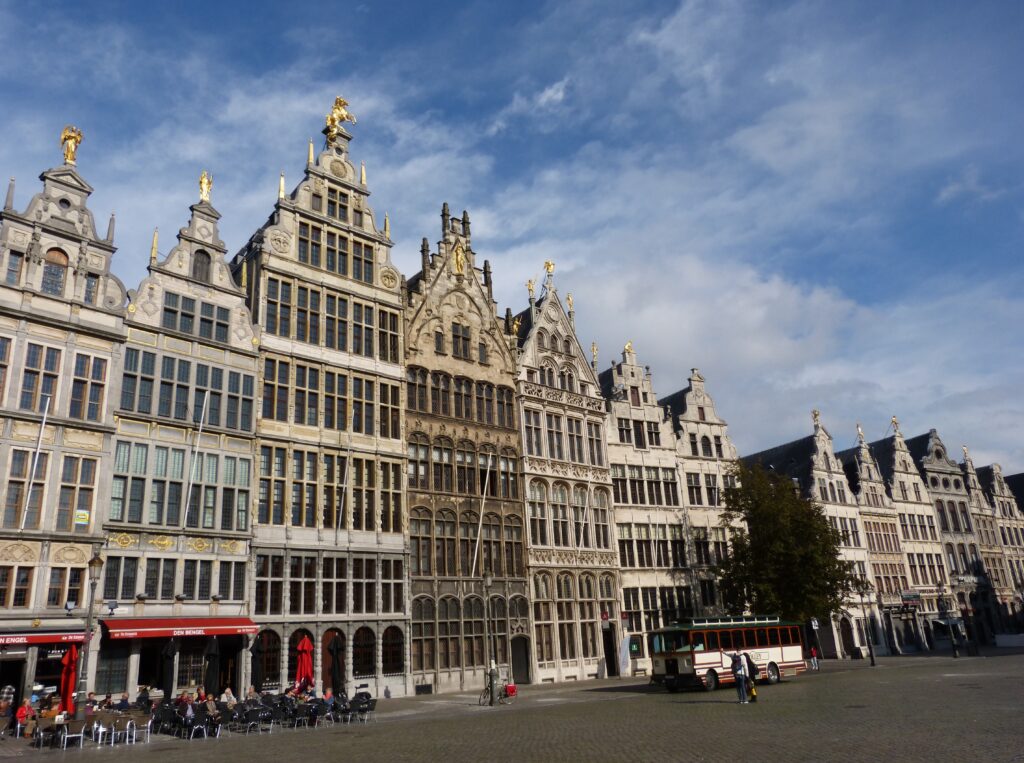
Those are all reconstructed guild houses. The originals were destoyed by fire in 1576.
Notice that each of the houses is topped by a different gold statue.
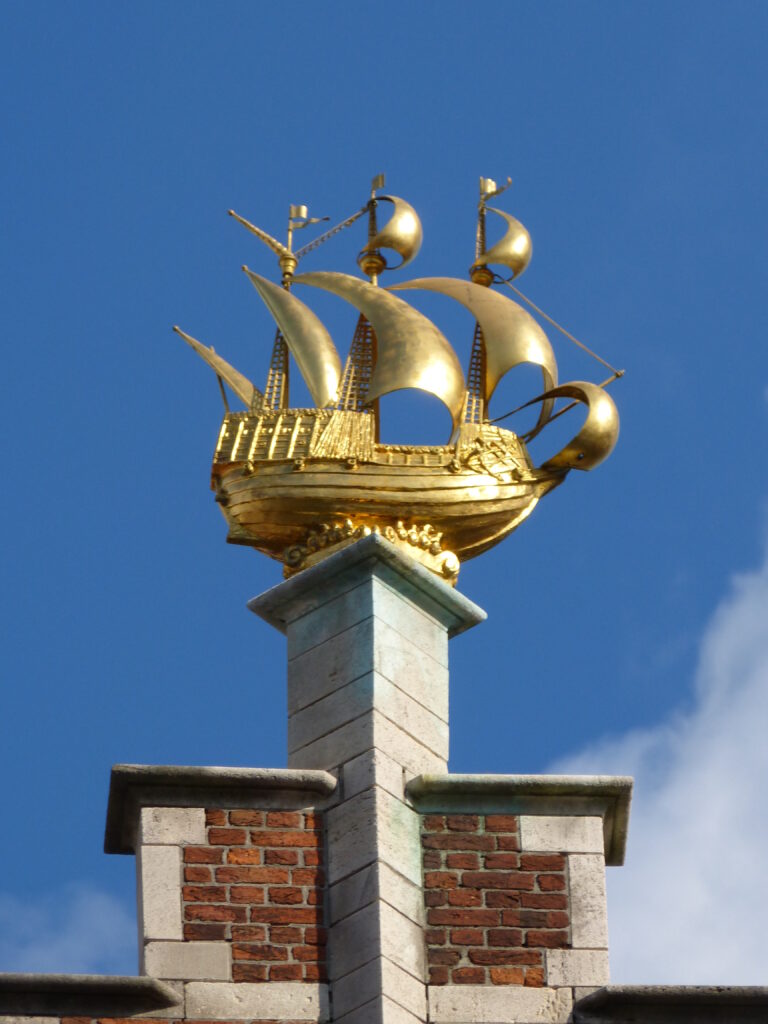
I’m guessing that maybe that was the shipbuilder’s guild or the seafarer’s guild or something along those lines.
One of the focal points of the Grote Mark is the Brabo fountain in front of the Town Hall.
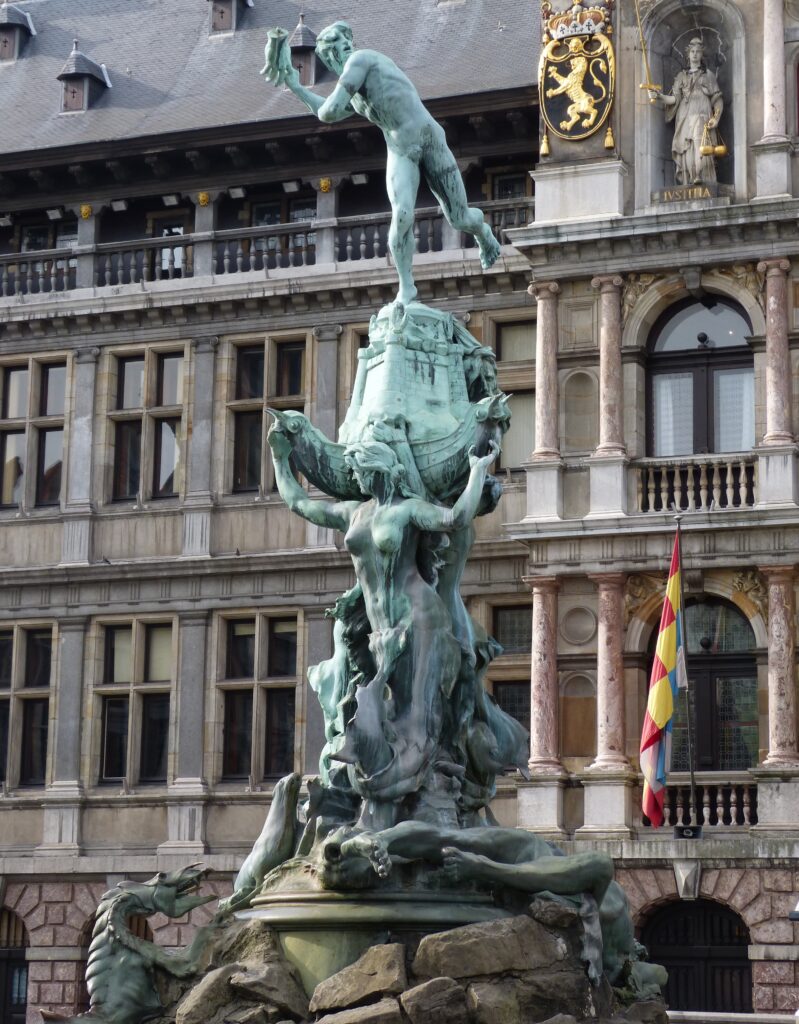
At the top of the fountain, Brabo is holding a severed hand. Legend has it that that a giant used to collect tolls from ships along the nearby Scheldt River. The giant cut off the hand of anyone who didn’t pay the toll. This went on until Brabo, a Roman soldier, cut off the giant’s hand and threw it into the river.
Legend also had is that the name of the city came from this story. The Dutch words “hand werpen” mean “to throw a hand”, and the name Antwerp supposedly derived from that.
The Grote Markt is ringed with bars and restaurants. It was a gorgeous, late autumn day when we were there so we sat outside and Sean had the Tipple of the Day.
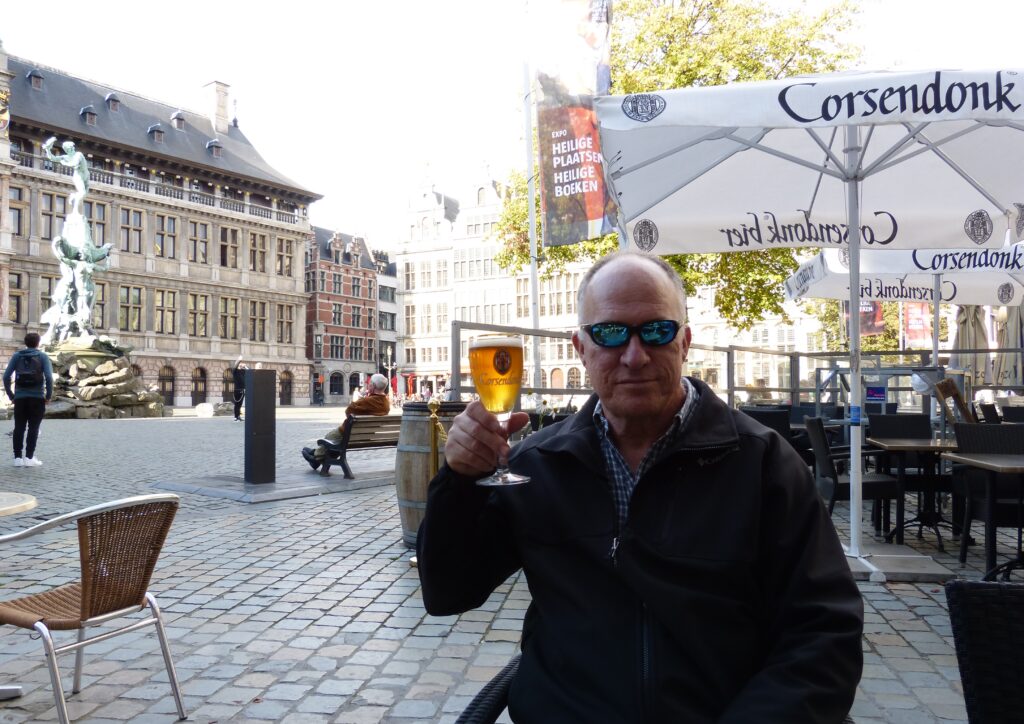
Can you guess what kind of beer he had? For a hint, look at the umbrella behind him. Okay, I guess that’s a little more than a hint. Corsendonk is one of Sean’s favorite Belgian beers.
If you’re not sure what kind of Belgian beer you might like, there are plenty of shops where you can buy numerous varieties to try.
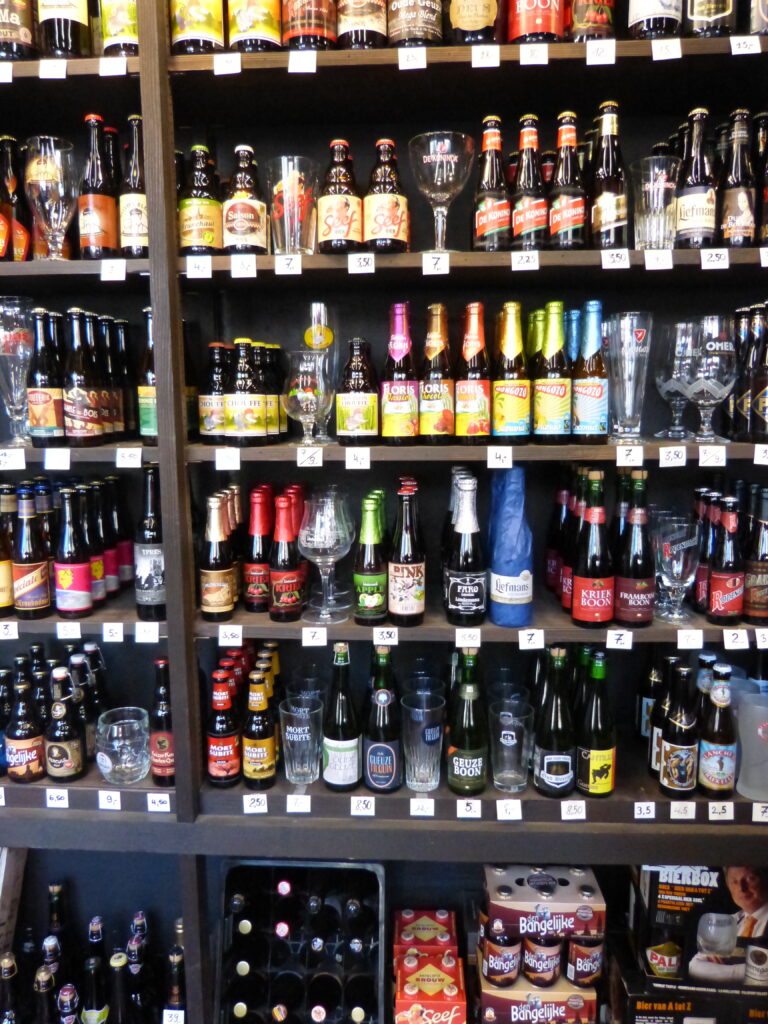
Of course there are also plenty of bars where you can sample lots of yummy brews as well.
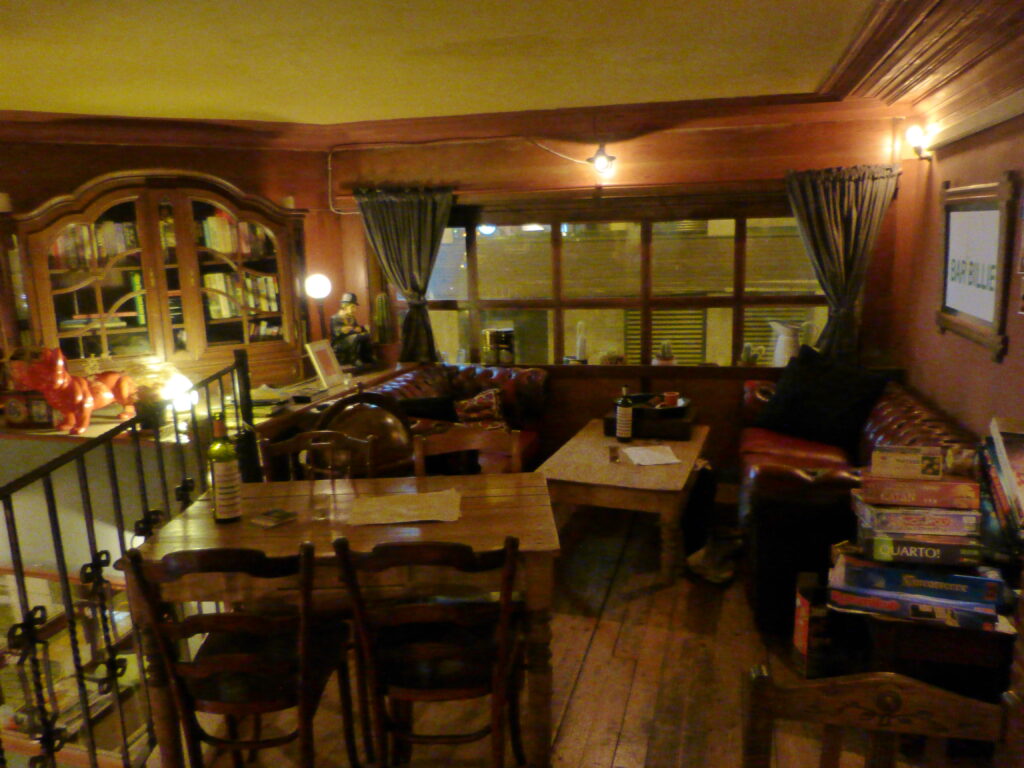
On our last night in Antwerp we stopped at a bar near our hotel called Bar Billie. It’s named after the owner’s bulldog, who was present the night we were there. The bar is a tiny, cozy two-level place with comfy chairs, board games, books etc. The owner spoke perfect English and he was happy to walk upstairs several times to serve us different beers. He was extremely knowledgeable about the beer and shared information with us to enhance the tasting experience. Plus he had great music playing in the bar.
The next day we ended our Belgian road trip and headed to Cologne, Germany after checking out of the hotel. My brother, a stand-up comedian, was doing a tour in Europe and was headlining an English-speaking comedy show as part of the Cologne Comedy Festival so we stopped there for a night to see the show.
I would definitely make a return trip to Antwerp to explore some of the neighborhoods we didn’t get a chance to see on this trip.

